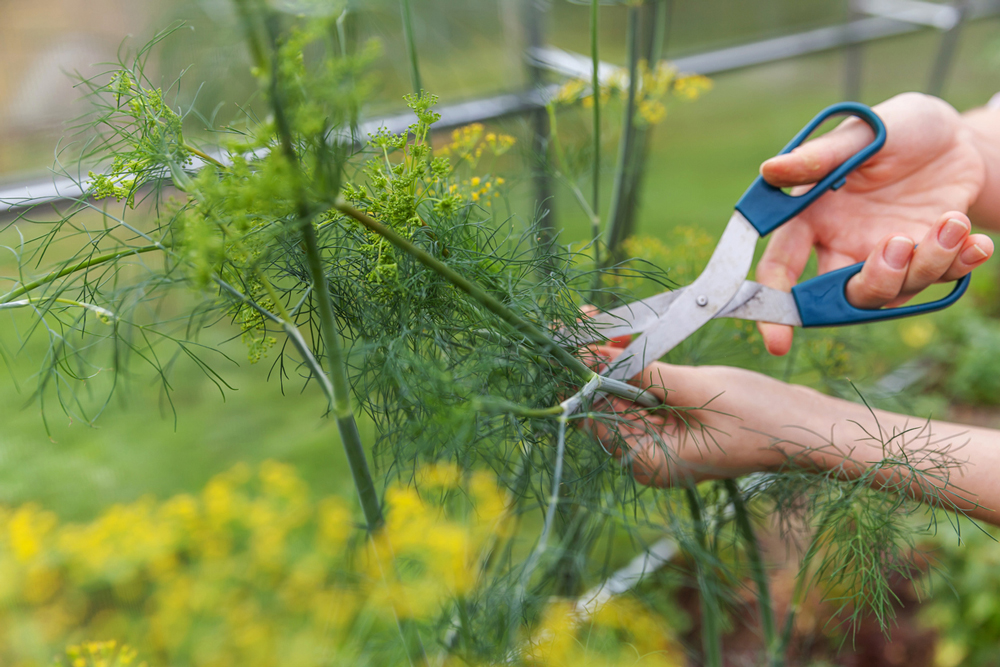
Dill attracts beneficial insects to your garden, and you can also use it for pickling. iStock image
FOUR LEGS
Please, if you see an animal behaving oddly, do not approach it. Rabies is not like in the cartoons with a wild animal frothing at the mouth and a neon arrow above.
Some odd behaviors might be a nocturnal animal out in the middle of the day, a “drunken” walk or wobble, or no fear of human contact/ wild animal acting tame.
“Any mammal can theoretically be infected with rabies and can therefore transmit the disease to humans if exposure occurs.” (rabiesalliance.org)
SIX LEGS
We’re going to plant some dill. Want to know why? Dill attracts lots of beneficial insects to your garden.
For instance, dill attracts ladybugs, green lacewings, braconid wasps, tachinid flies, hoverflies, mealybug destroyers, and aphid midges.
By planting dill, you can lure beneficial insects to help control aphids, tobacco hornworms, tomato hornworms, whiteflies, leafhoppers, mites, fleas, Colorado potato beetles, cutworms, squash bugs, and some species of mealybugs.
Then, when your cucumbers are ready for harvesting, use the dill for pickling.
And while we’re planting herbs, don’t forget mint. Mint repels less desirable visitors such as aphids, cabbage moths, flea beetles, fleas, and ants. (Side note: There are over 500 species of mint, including spearmint, pineapple, orange, chocolate — a favorite — lavender, calamint, grapefruit, basil, ginger, pennyroyal, and licorice. They will each get the job done.)
EIGHT LEGS
Sheryl Smith-Rodgers, a local expert on spiders tells us, “Spiders help keep the ecosystem balanced in our gardens by eating insects, many of which we consider to be pests. There's no reason whatsoever to kill a spider on a web or wandering among your plants. Only the black widow and brown recluse have venom that's considered dangerous but not deadly to humans.”
GRASSHOPPERS
Melissa of Burnet inquired about more ways to control grasshoppers. Melissa, you can plant marigolds and zinnias in your garden, which will draw soldier beetles. And soldier beetles prey on grasshopper eggs.
We are getting close to the critical time of the first hatch. You can see them when you mow your yard; they are those little-bitty white things that try to stay ahead of the mower.
When you see grasshoppers, it’s time to get out the flour. Fifty pounds will be more than enough to do the average yard. All-purpose flour will work; self-rising flour is best. And grasshoppers aren’t gluten-free.
It is best to apply the flour of choice early in the morning when there is a heavy dew on the ground. Step 1 is determining the direction of the wind (hint). Step 2, throw with the wind (hint, hint — unless you would like to look like the Pillsbury Doughboy.) Step 3 is casting the flour by hand over infested areas. Repeat the process in about two to three weeks, when the next hatch begins.
Til next time. Keep your souls and soles in your garden! Remember the True Master Gardener: Jesus said, “I am the vine; my Father is the Gardener.” John 15:1
In the Garden is written by father-daughter gardening duo Bill and Martelle Luedecke. Contact Bill Luedecke at 512-577-1463 or bill@texasland.net. Contact Martelle Luedecke at 512-769-3179 or luedeckephotography@gmail.com.












